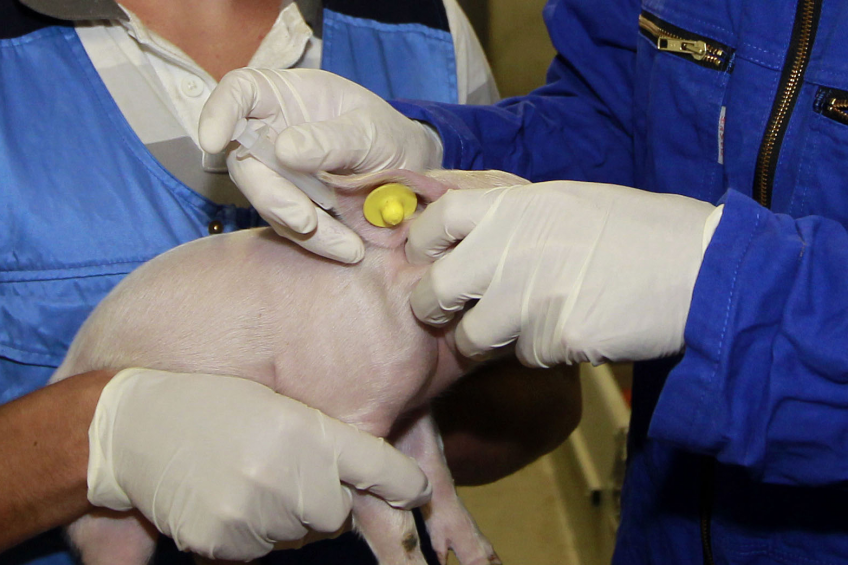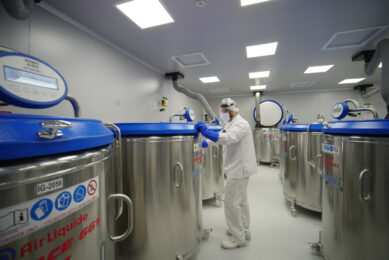Debate continues: EC’s proposals on medicated animal feed

The debate concerning the European Commission’s proposals regarding the Regulations on Medicated Feed continues with now the European Parliament’s Committee on Environment, Public Health and food Safety (COMENVI) chipping in.
In addition in the UK an ad hoc working party representing the feed, farming, veterinary and pharmaceutical industries also met to discuss the practicalities of the EC medicated feed regulations. Their views represent the very practical hands-on people that these regulations might affect and they suggested some major practical changes.
1% carryover of antibiotic residues is considered restrictive
The carryover of antibiotic residues in following un-medicated feed is proposed to be 1% by the EC. This is thought to be too restrictive by the UK feed industry and would add additional costs to production and would prefer 3% as is currently the level for most feed additives. COMENVI propose that EFSA (European Food Safety Authority) should regulate this based on a risk assessment for each product. This is fine but these veterinary medicines are administered by the EMA (European Medicines Agency) and logically they should carry out the risk assessments. Generally, the risk from carryover is considered low, even for the penicillin, amoxicillin, which was recently shown to have no effect on resistance induction at 2.5% carryover (van der Horst et al, 2013).
Prescription duration is another complex topic. COMENVI’s approach does not really make any sense at one week. In the UK, a number of medicated feed products are indicated for 5-7 days but the majority are for more than one week and therefore would require several prescriptions to achieve the right duration of inclusion (Table 2). This would add an additional cost and burden to the farmer.
The UK feed industry also supported a one month duration of prescription as being practical, as this reduced the administrative burden and cost substantially. So saying, the duration of treatment has been set by the veterinary medicine authorities, such as EMA, therefore should that not be taken into account?
Homogeneity of feed medicine inclusion also raised a number of issues. Most commercial feed mills have to supply data regarding their homogeneity of mix for registration purposes and could comply with 10% based on inert substance analysis such as minerals. However, it does not take into account the recovery of the antibiotic from the feed, the actual assay process and this can add a significant potential variation. It was proposed that at least a 20% variation for antibiotics should be acceptable.
Vets should determine how and when medicinal products are used
Preventive or prophylactic use represents a major cause of concern, if this is never permitted as COMENVI proposes. Veterinarians are put in an invidious position as their primary concern is the health and welfare of the animals in their care. The UK’s Royal College of Veterinary Surgeons, our governing body, states in The Code of Professional Conduct for Veterinary Surgeons ‘veterinary surgeons must make animal health and welfare their first consideration when attending to animals.’ I think most would agree that it should not be a replacement for poor hygiene, husbandry and management. In continuous-flow production systems one tries to reduce stresses and infections by vaccination etc but unfortunately this is not always enough. How a medicinal product is used should be left to the veterinary surgeon to determine when and where it should be used and to use it responsibly. The medicines have been reviewed by regulatory bodies and have suitable instructions for use, why should this be overturned by the dogma from a few Member States.
A blanket ban on CIAs for humans has no merit
Concerns have also been raised that Critically Important Antimicrobials (CIAs) for humans should not be used in veterinary medicine. The major ones such as the fluoroquinolones and 3rd and 4th generation cephalosporins are not used in feed in the EU. The aminoglycosides are not so widely used in human medicine any longer, because of their toxicity related to the ear (hearing and balance) and kidneys and newer, safer antibiotics are preferred. In animals, they are commonly used orally avoiding the toxicity issues. The macrolides are used in human medicine but the main crossover disease is the zoonosis caused by Campylobacter jejuni mainly from broiler chickens and the majority of these isolates are considered susceptible to erythromycin 0-0.4% (Danmap, 2007, 2010; EFSA/ECDC 2014). Many of the respiratory infection bacteria found in humans that are treated with macrolides are human specific (e.g. Streptococcus pneumoniae) so the risk of treatment failure in man caused by resistance transfer from animals can and has been assessed as minimal. A blanket ban of highly critical antimicrobials in animals would have almost no effect on human medicine’s resistance issues but a major effect on animal production in the EU. Risk assessments are already made by the EMA.
The process to assess the EC medicated feed proposals is moving on swiftly and the EU Parliament, last week, reported back to the Commissioner on its progress. Let us hope Common Sense will prevail – we are the Common Market after all.











